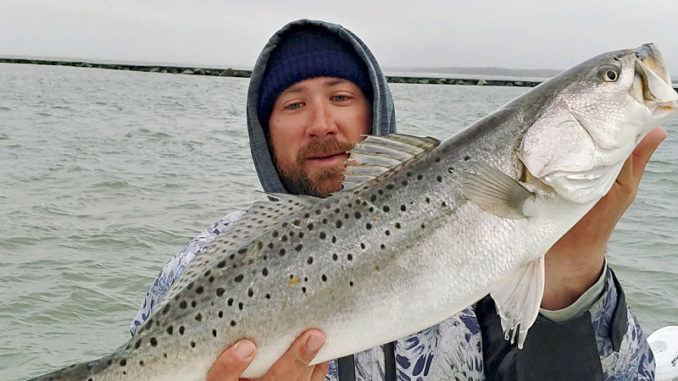
For speck anglers, cold weather is welcome
Mother Nature didn’t want to give up summer this year. The warm, summer-like temperatures carried well into fall. And consequently, that delayed the speckled trout bite in South Carolina for more than six weeks.
But, they finally showed up. December is the premier period to catch speckled trout. And Murrells Inlet is a prime spot to catch a quick limit.
Dan Connelly of O-Fish-Al Expeditions is known for catching lots of big speckled trout in the fall. And he said that no matter what the weather looks like, there is always a period when he can put his clients on trout.
“The absence of cool weather this fall delayed the fall action,” said Connelly (843-241-7022). “But I tell my clients that the period between Thanksgiving and Christmas is always a safe period to expect trout to be here and feeding.”
South Carolina’s coast basically has two populations of speckled trout: a resident population and a migratory group. The migratory group moves down the eastern seaboard and will show up in the Murrells Inlet area when the water temperature drops into the mid to low-60s. This year, that cool water didn’t show up until the middle of November. As a result, the mullet migration remained active for a month longer than usual.
“The mullet migration ends, but there are large groups of shrimp moving down the coast; that makes the trout key in on shrimp. This is when they start feeding hard in our area,” he said.
Connelly fishes all over the Murrells Inlet area. But his favorite places for big trout– and lots of them — are near the ocean.
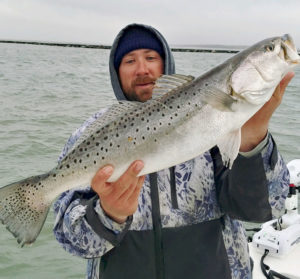
The jetties are a hot spot
“I like to fish the jetties and places near the jetties this time of year. The trout are feeding heavily on these big schools of shrimp,” he said, “which move down the beach and gravitate to the jetties for protection.
“The bigger shrimp stay in the open ocean most of the time, and they have no protection,” he said. “So when they are migrating and moving with the current, they come across the jetty structure and use it to hide within the crevices. The trout cruise along and pluck them out.”
Live shrimp fished under a slip cork is Connelly’s favorite bait. That’s what big trout are looking for and feeding on. But Connelly will also use artificial shrimp lures.
“When I use plastics, I love using D.O.A. shrimp because they have the best sink rate of any of the artificial shrimp. And the sink rate makes a huge difference. I prefer to use the ¼-ounce size in clear with gold glitter or clear with red glitter,” he said.

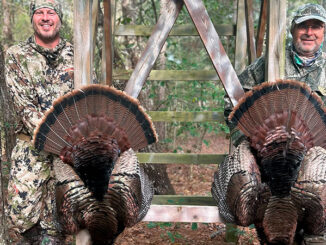
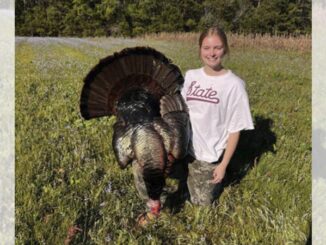
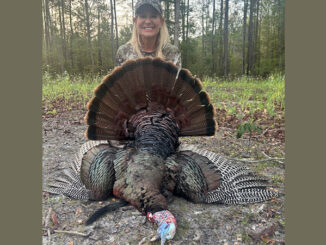

Be the first to comment